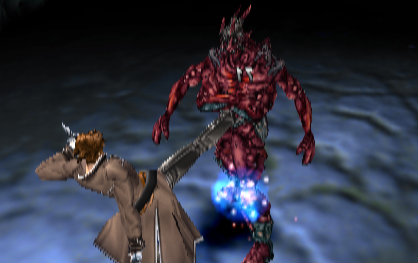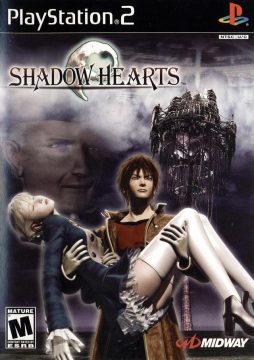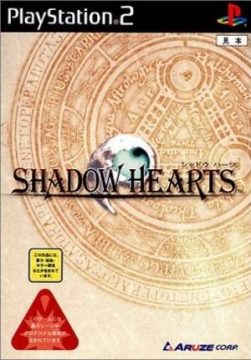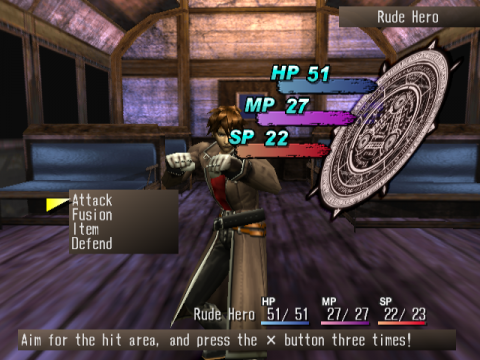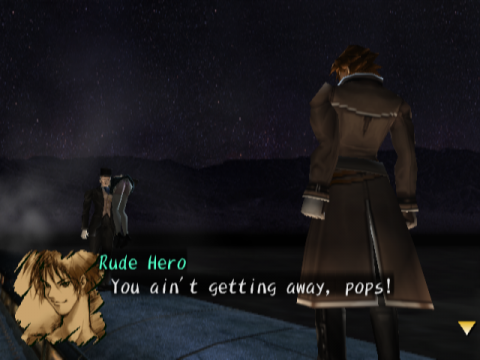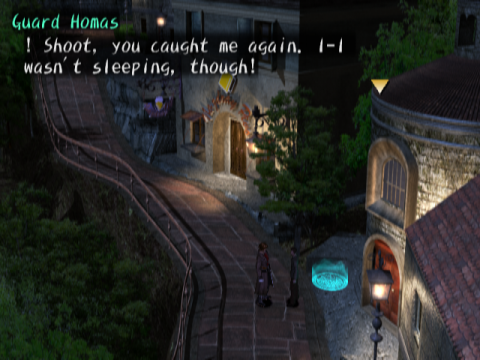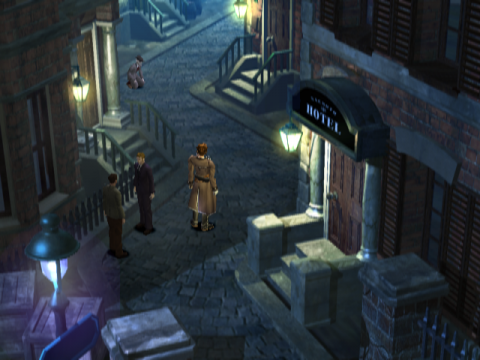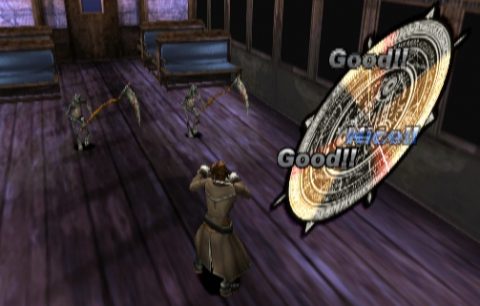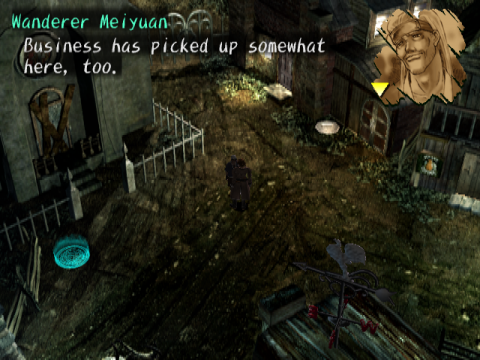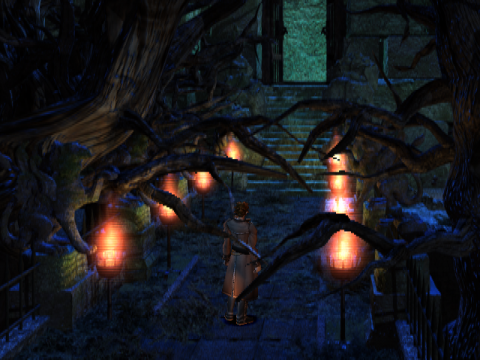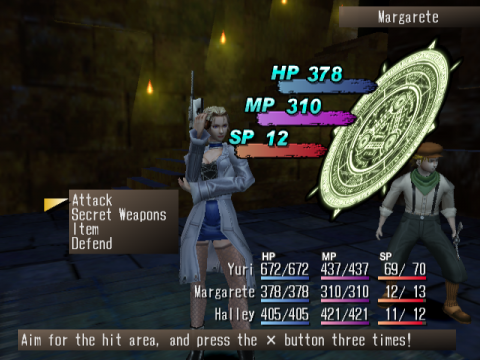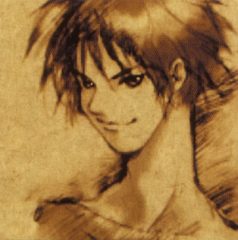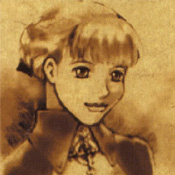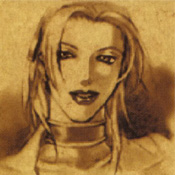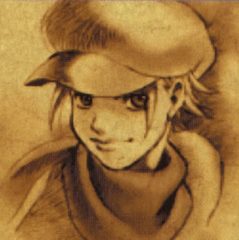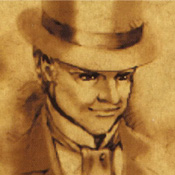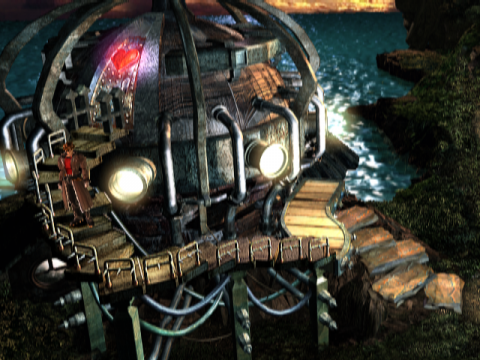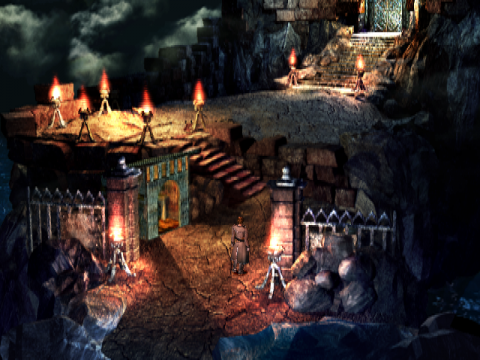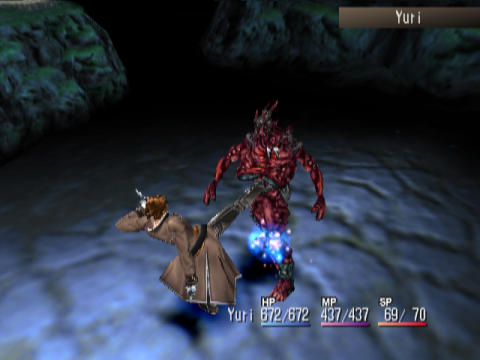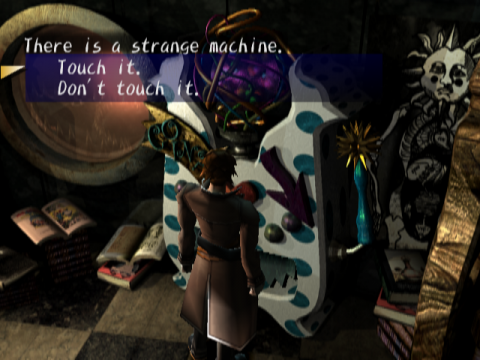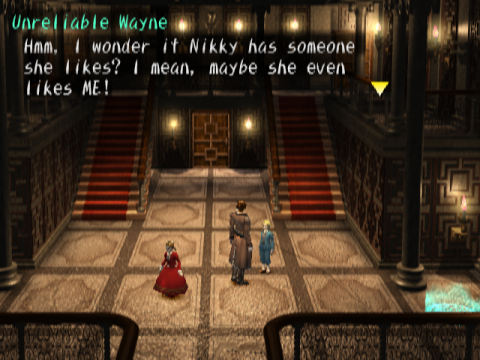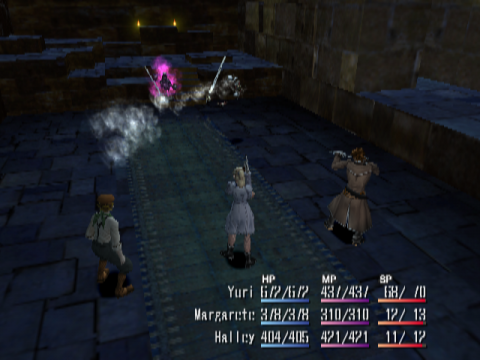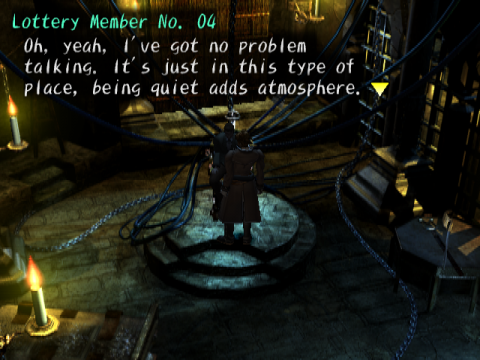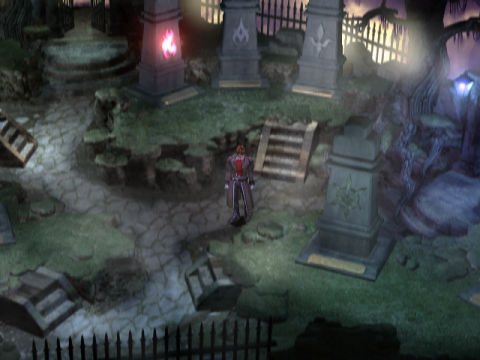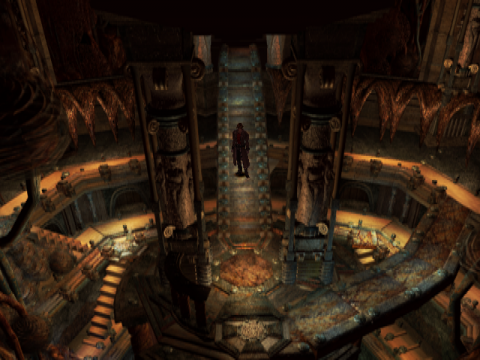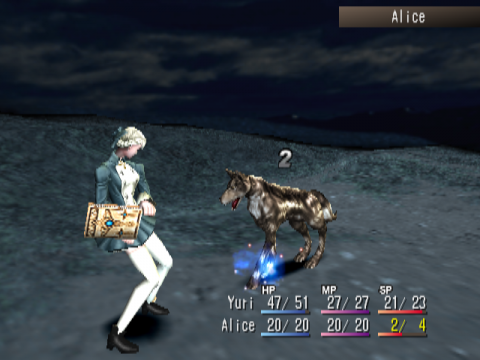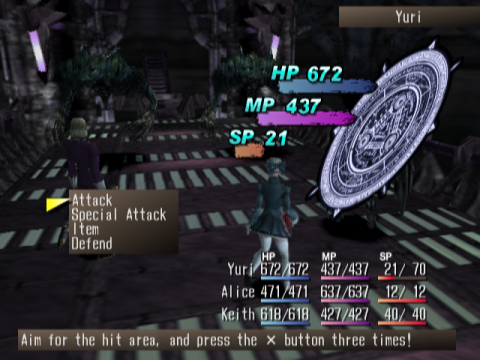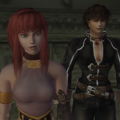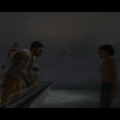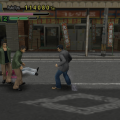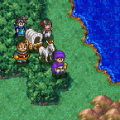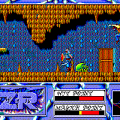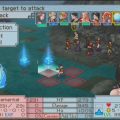If there’s one thing the video game community can always be relied on to do, it’s second-guessing itself, often in the least-diplomatic manner possible: some measure of debate is to be expected amongst a sizable group with such varied tastes, but gamers have long made it their mission to turn “my dad can beat up your dad” into its own art form. Even within this hyper-neurotic little culture of ours, however, few genres split so deep and wide a gulf betwixt fans and detractors as role-playing games, particularly those of Japanese origin. Documenting the often-heated back-and-forth concerning the intrinsic “worth” of these “JRPGs” could easily span an article (if not a website) all by itself, but two long-standing complaints from the naysayers’ camp tend to occupy the center around which the rest of the conversation revolves:
1) The JRPG has lain all but completely stagnant for years, if not decades, in terms of narrative and setting, dominated to the point of exhaustion by bloated and predictable fantasy clichés and tropes; it’s sometimes difficult to even tell competing series apart from each other without looking closely.
2) JRPGs do very little to involve the player from a physical standpoint, beyond the single-button confirmation of menu selections, repeated ad nauseam; it’s far too easy to “zone out” and let the game more or less play itself.
Even as they tirelessly highlight every exception to the above that they can recall, honest JRPG players will find it difficult to maintain that these criticisms don’t hold more water than they ought to. Regardless which side of the line you’re on, it would seem, a shake-up of sorts is in everyone’s best interest: a unilateral declaration, as it were, that this storied genre, like any other, can branch out and do something both different and fun without being altogether untrue to itself. A shot in the dark and a shot in the arm, rolled into one. Welcome to Shadow Hearts!
First off, you can forget all about Tolkien-styled medieval kingdoms and glossy pseudo-sci-fi dystopias: these games, for a change, take place in “our world” during the late 19th and early 20th centuries. Sure, copious liberties are taken with matters of record to spice things up, but you’ll still be journeying to real-life places, meeting famous figures of the era, and observing as the series’ fiction is interwoven with documented events of the day. Those thirsty for a break from the latest round of Goblins vs. Elves are almost certain to find this somewhat more “grounded” tale both intriguing and refreshing compared to yet another Far Far Away spun from whole cloth.
The requisite storyline is similarly unafraid to leave behind its kin’s all-too-typical melodramatic drone: Shadow Hearts players can expect liberal doses of everything from freakish horror to goofy humor, not to mention a near-wholesale disregard for any and all political correctness. A plethora of personalities, controllable and non-, play an integral part in bringing their world to life, and are more than a little hard to forget once you’ve made their acquaintances: if you yawn at the notion of standard-issue knights and wizards in your party, for instance, how does taking a pro-wrestling vampire for a spin sound? Or a mariachi guitarist with an itchy trigger finger? Then again, you could always unleash the fury of a klutzy white-guy ninja dangling an anglerfish lure from his forehead.
While you’re at it, cancel the trip to the dragon’s cave in favor of a climb up a forbidden Vatican tower. Or perhaps you’d prefer a hike along the majestic Grand Canyon…heck, feel free to break into Area 51 if the mood strikes you. While you’re there, rather than traipsing into another ye olde shoppe for a potion or two, procure your goods from an incredibly enterprising gay couple cruising the globe via motorcycle. Once you’re outfitted, don’t seek further upgrades at the usual shady gladiatorial arena; test your mettle versus a lengthy succession of skinny dudes balancing plates of curry on their heads.
So yeah, you’re pretty much guaranteed to never mistake a Shadow Hearts game for anything else.
Even more importantly, while the general gist of exploring, talking to people, finding/buying stuff, gaining experience points/levels and fighting turn-based battles should be familiar to anyone who’s played a JRPG before, Shadow Hearts insists that its players possess not only a sense of strategy and proper preparation, but a keen eye and quick fingers too. Sure, you manipulate a cursor to initiate actions as per usual, but that’s only the first step: here you’ve got to earn the right to actually put your decisions into effect.
The linchpin to this end is the “Judgment Ring” system. Whenever you opt to launch an attack, use an item, or just about anything else of note, a circle will pop up onscreen, and a radial line “indicator” will start to rotate within it, akin to a radar display. Along its path are one or more color-marked “hit” sections of the circle: as the indicator passes through each of these, the player has to quickly press a button before it exits. Successfully “hit” each segment and your action will successfully execute; put the hammer down too early or too late and your command will be either partially or completely canceled, leaving you to wait until your next turn to try again.
This simple mechanic not only puts the tired “no skill required” JRPG criticism to bed by demanding a measure of focus and concentration, but comes and goes quickly enough that battles don’t needlessly drag: those days of half-awakedly mashing “confirm” over and over until you decide to head back to the inn are but distant memories. It must be noted that “revolutionary” isn’t exactly an appropriate word here, seeing as this is far from the first appearance of a “timing” element in a role-playing game, but the Shadow Hearts games infuse the Ring with a greater degree of vitality and depth than most any competitor, certainly more than enough to elevate their approach into a league of its own.
Tragically, some of these long-overdue departures from convention may indeed drive a subset of potential players away, likely dismissing it as “too weird” for their liking on the way out (adding fuel to the “JRPG’ers just want the same generic crap over and over again” insult while they’re at it). To be perfectly frank, it’s their loss, and the same goes for any know-nothings who refuse to have a taste and judge for themselves “because it’s a JRPG”: everyone else with an open-enough mind will almost certainly find a lot to love, and a lot to talk about, when it comes to Shadow Hearts.
As you might expect from such an out-of-the-ordinary bunch, of course, theirs was not a “traditional” path from the drawing board to the disc.
By the time the fledgling outfit’s next project rolled around, Matsuzo Itakura, Koudelka‘s art director and another Square alum, had taken Kikuta’s place as head of the company, and Sony’s shiny new PS2 was hungrily gobbling up the original Playstation’s clout for itself. Sacnoth’s first shot at the up-and-coming system was in some ways a more by-the-numbers RPG than Koudelka, but in other respects bucked its genre’s prevailing trends to a far more significant degree.
Remaining true to its ancestor’s macabre setting and atmosphere but working off of a design blueprint both more familiar and more complex than before, the Shadow Hearts series was “officially” born. In Japan the game was published by Aruze (currently operating under the über-generic Universal Entertainment Company label), which had recently bought out a bankrupted SNK; it was also, against all odds, picked up for distribution in the USA and Europe by none other than the similarly ill-fated Midway.
Plot-wise, Shadow Hearts takes place 15 years after Koudelka, in 1913, and spans a number of locales, fictional and non-, across the Eurasian continent. World War I hasn’t yet thrown the globe into unprecedented turmoil, but a palpable sense of dread still fills the air, thanks not only to rising international political tensions but a laundry list of dark rituals and supernatural phenomena occurring further behind the scenes, fueled by forbidden tomes and relics with a cadre of mystical sects and secret societies pulling the strings. This latter portion, of course, is what the player will find himself most involved with, in the guise of a scrappy new hero and his suitably offbeat supporting cast.
Characters
Yuri Volte Hyuga
A 24-year-old man purportedly of mixed Japanese and Russian heritage, Yuri (known as Urmnaf, or “Uru” for short, in the original Japanese version) possesses the abilities of a “Harmonixer”: essentially, he can transform into a variety of powerful monsters. Despite this distinction, Yuri’s only true direction in life is an unpredictable voice in his head, which has recently instructed him, without explanation, to find and protect a girl named Alice. More than a little rough around the edges (and unapologetically proud of it), Yuri rarely backs down from a fight, whether for a worthy cause or just the sheer thrill; these traits earn him enemies in high places, not to mention the business end of more than one curse.
Alice Elliot
After her father, a famed exorcist, is killed before her eyes, Alice, wearer of perhaps the shortest skirt in priestess history, suddenly finds herself hunted down by a range of sinister interests, all intent on somehow exploiting her divine gifts for their own ends: Yuri, as it happens, first enters her life by foiling an imminent abduction on the Trans-Siberian railroad. Initially put off by his blunt, crude mannerisms, Alice eventually comes to understand the nature of his struggle and determines to assist and comfort him however she can; over time the two grow close. As you might expect, she’s your white mage, most proficient in healing magic.
Zhuzhen Liu
Introduced to the player early on as “Quack Oracle”, this old master of the mystical arts is far more knowledgeable than such a moniker would suggest, having seen or experienced firsthand many of the major happenings leading up to the world’s current and volatile state of affairs. While kindly and diplomatic when he wants to be, Zhuzhen always keeps a sharp tongue at the ready for anyone who gets on his nerves (usually the incorrigible Yuri, of course). His “Yin and Yang” battle techniques are a mixture of curative and offensive elemental spells.
Margarete G. Zelle
A spy and explosives specialist intent on tracking and disrupting the movements of an increasingly-aggressive Japanese army, she crosses paths with Yuri and company during a not-so-delicate operation. After observing them in action she determines to tag along, certain that the motley crew has something of value to offer her mission. Margarete lacks superhuman abilities, but does carry a nifty (and anachronistic) cellular phone that can be used to call in anything from bazookas to giant healing syringes, all of which drop instantly out of the sky in superbly goofy fashion. She’s named after and (loosely) based on the actual historical spy popularly known as Mata Hari.
Keith Valentine
As a vampire of noble birth, Keith possesses not only extraordinary strength and longevity but immunity to sunlight, garlic, and most such other traditional weaknesses and wards: thankfully, he’s also an upstanding, soft-spoken sort, well-liked by his neighbors and especially kind to children. Unexpectedly roused from a prolonged stasis by an out-of-control Yuri, once the rest of the group arrives at his castle Keith decides to join up and help out instead of returning to his slumber and letting things outside solve themselves. Most of his “Ritual” special attacks are purely offense-oriented, though some, appropriately enough, can also absorb life from enemies.
Halley Brancket
A slingshot-brandishing London street urchin. His mother, an exceptional psychic, has been accused of witchcraft and taken away by force; Halley, left to fend for himself, has inherited some similar mental powers but struggles for control when they manifest themselves. He and his impoverished gang of orphans trick and pickpocket Yuri when he first arrives in town, but once the group is caught Halley’s story comes out, and the protagonists agree to help him find Mom (a hint as to his origins: his first name, “Harry”, was mistranslated…and so was his last name). Halley’s “ESP” abilities have a variety of effects in battle.
Roger Bacon
An English gentleman who wields an extraordinary command of dark magic, he is Alice’s most dogged pursuer and a dangerous rival for Yuri, though the two also harbor a sort of cordial respect for each other. His name mirrors that of a famous alchemist (and real-life thirteenth-century philosopher) who is said to have achieved immortality hundreds of years earlier, but opinions vary as to whether or not this could be the same person.
Shadow Hearts‘ most noteworthy innovation is its revamped battle system: enemy encounters are still random, but Koudelka‘s grid-based framework has been deep-sixed in favor of a more conventional and efficient turn-based setup. This occasion also marks the birth of the iconic Judgment Ring, which requires players to demonstrate a measure of button-pressing precision to successfully pull off attacks, obtain deals while shopping, or even progress the story at certain points (though the latter is kind of silly, as you simply keep trying until you get it right; you do get better prizes if you nail it on the first go, at least).
While utterly mastering the Ring isn’t necessary to get through the game, honing your timing will definitely make progress smoother, especially in combat, where not only are more powerful attacks trickier to nail, but successfully snapping the indicator within an extra-thin “Strike” zone awards heightened power. Careful, though, as some adversaries can afflict Ring-specific status ailments custom-tailored to screw up your timing.
Another distinctive tweak to the usual RPG song and dance is the presence of “Sanity Points” (“SP”) in addition to your standard stocks of health and magic – as the in-game explanation goes, getting up close and personal with freakish monsters does a number on your characters’ minds, and their sanity ebbs a bit with each action taken in fending off the nasty things. Different characters’ mental thresholds vary, but if anyone’s SP ends up completely depleted they’ll freak out, go “Berserk” and become uncontrollable: while not technically “dead”, if they’re still Berserk when the fight is over they won’t receive any experience.
It’s not quite as pressing a concern as it sounds, since SP is automatically refilled after every encounter and most skirmishes end before it becomes an issue, but against hardier foes (especially ones with the ability to drain additional SP) you’ll want to keep an eye on the meter and have a supply of items on hand to replenish it when needed. Basically, Sanity Points serve as motivation to finish your battles as quickly and efficiently as possible, and to add an extra layer of psychological dread to the proceedings; like them or loathe them, the design team chose to make them a permanent series fixture, so you might as well get used to ’em.
Then there’s the “Malice” system, the result of one of the aforementioned curses that Yuri has to deal with. As you kill enemies you’ll accumulate their “malice” towards you, and if you let too much of it build up a super-powerful baddie will be drawn to its source (i.e., you), quite likely ending your game unless you’ve prepared specifically for him in advance (and even that’s no guarantee). To prevent this from transpiring Yuri needs to periodically enter the foreboding “Graveyard” within his own mind and fight a solo battle to temporarily purge the malice from himself: the longer you wait the more powerful the “manifested” enemy there will be, though it’s never anywhere near as dangerous as the alternative.
As with SP, Malice generally isn’t a major issue, but since you can only access the Graveyard at save points it’s something of an annoyance, since it prevents you from wandering too far away from “home base” even if the local pests aren’t giving you much trouble. On less-frequent journeys inward Yuri can also choose to spend “Soul Energy”, simultaneously earned from battles, to unleash, confront, and gain control of new fusion monsters: the specific type of soul energy you get, however, depends on the elemental affinity of the adversaries you beat up, which can be a bit irritating if you’re on the cusp of unlocking a new Fire-type fusion whilst stuck in an area with no Fire monsters.
Other features include the ability to pay for “acupuncture” from the first in a long line of aggressive, homosexual “specialty” merchants, something of a series hallmark in and of themselves. This can either strengthen a weapon’s attack power or widen the size of its Ring hit zones: unfortunately, the process is expensive, and buffing one aspect will weaken the other. Enhancements also only apply to individual weapons, so as soon as you upgrade to a new piece of equipment all the money you spent on the last one goes out the window, rendering the service largely useless. Items and accessories do exist that allow you to tweak the Judgment Ring in a more practical fashion (daredevils can even hide hit areas from sight, forcing a reliance on muscle memory in exchange for heightened power), though they tend to be rare.
Shadow Hearts also establishes itself as one of the few non-Roguelike RPGs to “score” and rank players throughout the game based on how far they’ve progressed and how capably they’ve performed in various categories: starting a “New Game Plus” upon completion doesn’t carry over most of the stuff you’ve obtained or the levels you’ve gained, but your old score is still available for viewing, to see if you can top it this time around. You also get to keep all the character and monster information you’ve amassed in the game’s handy Encyclopedia, as well as a “Help” menu which can be accessed at any time if you need a refresher on the various systems at your fingertips.
You’ll definitely want to make good use of every advantage you’re given, since the game, while not impossibly tough, is relatively challenging for a JRPG: not only are cash and supplies often tight, but baddies, bosses in particular, tend to take considerable effort to bring down even if you’re well-prepared. Shadow Hearts also embodies a Shin Megami Tensei-esque cruelty, insofar as it sometimes throws you into situations which are almost impossible to survive the first time out: characters, like monsters, possess an innate and unchangeable (except for Yuri, via his transformations) elemental affinity, and it can be tough to guess in advance who you should bring to a given fight for the best results. Similarly, if you run into a meanie brandishing an “instant death” spell when you haven’t equipped the proper defensive accessories, you’re pretty much guaranteed an express trip back to the last save point. Such instances aren’t frequent enough to completely hamstring the game, but do evoke some unwelcome frustration when they pop up: the fact that Yuri can only equip and access up to three Fusions at a time in battle doesn’t do much to improve your odds.
Our hero’s journey is another relatively short one, clocking in between 20 and 30 hours per run-through for most players; it’s also a mostly-linear trip, as side-questing and backtracking opportunities are kept scarce until late in the game. Most of the individual places you visit follow suit, lacking many offshoots from the main path to explore, though some players (even disregarding Malice management) might be relieved to not have to worry about losing their way too often, especially since, unlike Koudelka, there’s no in-game map at all.
On the other hand, Shadow Hearts still caters in a big way to players with ADD: in both towns and dungeons, exploring the obscure nooks and crannies that do exist frequently pays dividends, as “invisible” pickups are plentiful. Thankfully, also unlike Koudelka, when you strike gold a clearly visible question mark appears over your character’s head, so you’ll always know when you’ve stumbled onto something. Notwithstanding, much of the optional side content here remains quite easy to miss: be sure to take full advantage of the few opportunities you’re given to check previous areas, and be prepared to canvas absolutely everybody in hopes that a random conversation with some citizen or other opens up a new location to kick around in or some other reward for your persistence.
Presentation-wise, on quantifiable merits alone the game still comes up a bit short, even for an early PS2 release. While the generational jump means a de facto step up from Koudelka, backgrounds are still pre-rendered and sparsely animated. Characters and monsters (some of whose designs have been carried over from the PS1) do look a good deal better than before, but some clumsily blocky polygons and pixelated texturing are tough to ignore outright. On a positive note, the frame rate has been bumped up considerably so everything moves smoothly, and the grimly-realized locales and often-disturbing monster designs, inspired by Chinese and Christian mysticism with a generous dollop of Lovecraft on top, succeed better at offsetting the more systematic deficiencies than Nemeton Monastery ever did.
Cutscenes have also dramatically improved in both the technical and directorial departments: the CG sequences look particularly great, but the game also makes occasional, jarring use of grainy, stylized live-action footage as well, which will probably throw most players for a loop when it first shows up. All things considered, while Shadow Hearts‘ visuals don’t really detract from the experience, if you’re looking for a graphical landmark this isn’t where you’ll find it.
On the musical front, new composers Yoshitaka Hirota and Ryo Fukuda, working alongside industry veterans Masaharu Iwata (aka “Rezon”) and Yasunori Mitsuda (perhaps best-known for the Chrono games, though his work on Tsugunai: Atonement is the most similar to Shadow Hearts in spirit), put together a strong and eclectic soundtrack, capturing everything from the cheery and upbeat to the brooding, dissonant and threatening, infused with myriad “mystical” overtones, especially along the lines of vocal chanting and wailing (the main theme, ICARO, serves as a prominent example).
Despite the game’s short running time, said soundtrack spans two CDs and over 60 tracks: to give you some idea of what to expect, not only will you be treated to several different battle themes as you go, but if a character goes “berserk” in a particular setting there’s a unique musical transition for that too. Voices, on the other hand, are completely absent outside of CG intermissions and the “hyaas” and “oofs” of battle; the monsters are at least as vocal as your characters, growling and yowling as hits are exchanged. Strangely enough, in the game’s Western versions some of the in-fight clips were redone in English while others were left in Japanese; as a result a character may even speak with two distinctly different voices during the course of a single attack sequence, which is far weirder to hear for yourself than to read about here.
In the end, second only to the crucial implementation of the Judgment Ring, Shadow Hearts‘ best single asset is its nigh-unmistakable “vibe”, especially as embodied by its rough-and-ready protagonist – while most RPG heroes fall squarely into either the “valiant goody two-shoes” or “brooding angst machine” category, Yuri manages to settle into a comfortable spot somewhere in between while maintaining his own effortless flair, keeping an “edge” about him while remaining likable and down-to-earth enough to root for (and that’s without taking into account how vitally versatile he is in combat, unlike many “teenager with sword” headliners). Of course, just about everyone else helps to keep things interesting in their own way, including standard-issue NPCs, every one of whom possesses a unique name or title (“Fidgety Pot-Bellied Man”, “Dissatisfied Fumi”, “Diehard Smoker Ryan”, etc.): both sequels would end up taking the same tack with their own dramatis personae.
While the story doesn’t completely sidestep the narrative pitfalls players have come to expect, for the most part its goings-on will keep comers invested even if the gameplay occasionally elicits groans. In like manner, the creators don’t let the dark atmosphere grow overwhelming, peppering in welcome pockets of silliness here and there, from kooky, bizarre set pieces and dialogue snippets to out-and-out slapstick interludes: one infamous (and recurring) sidequest involves tracking down a naughty magazine for an old perv. That said, even some of your less-embarrassing exploits are pretty unique, from the Lottery (exchange rare tickets for a one-time shot at the Ring for a rare item via certain “undercover” NPCs) to the Pedometer (the farther you walk in dungeons, the better the prizes you get…and you eventually get the opportunity to cheat by equipping accessories to inflate your step count).
Despite showcasing a truckload of promise, Shadow Hearts was unfortunate enough to release around the same time as Squaresoft’s hotly-anticipated Final Fantasy X, and thus never stood much of a chance on store shelves, especially as a new IP reaping mixed critical reception. A little bit at a time, though, curious PS2 owners began to notice and sample its unique flavor, unofficially promoting it from “anonymous commodity” to “cult artifact”, to the point that a “Best” reprint (packaged with a bonus DVD, but also containing a save bug in some early copies) was eventually issued in Japan.
For many similar “niche” RPGs with a solid foundation in need of additional refinement this likely would have been the end of the road; aside from the aforementioned soundtrack (which features a “plus one” in its official title, to note a bonus song) and a strategy guide or two, little merchandise was ever produced (though PAL pre-order customers got a mini-guide, and there’s a garage kit figure of Alice floating around). Odds in favor of the developers getting a well-deserved opportunity to reassess and improve the formula seemed slim: defying expectations yet again, however, the Judgment Ring would soon begin to turn anew.
